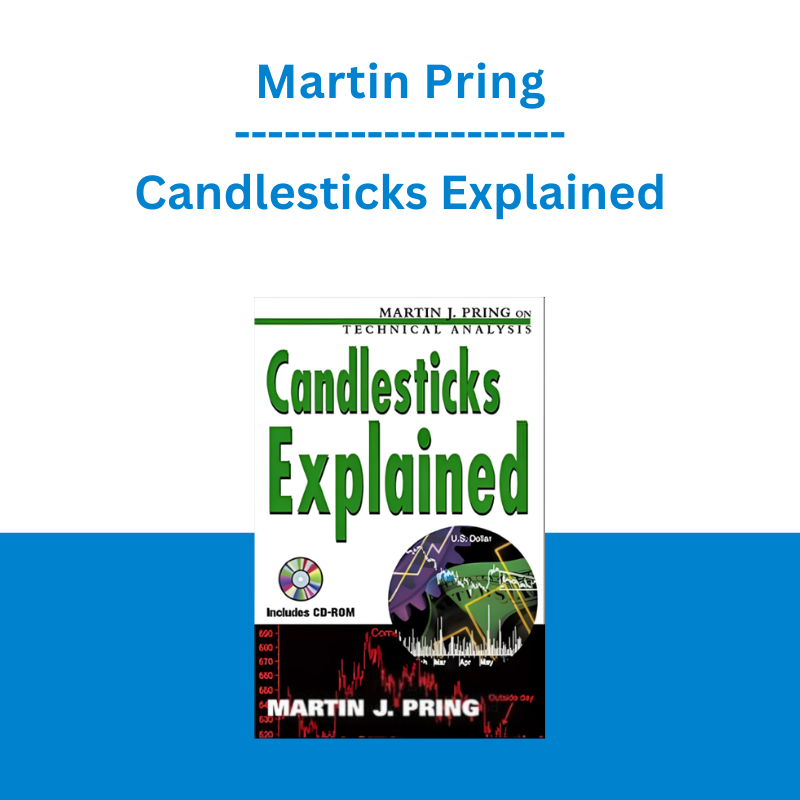*** Proof of Product ***
Exploring the Essential Features of “Martin Pring – Candlesticks Explained”
Candlesticks Explained
Complete guide to candlestick charting includes Western charting, Renko, Kagi and
3-Line Break. A step-by-step introduction with market examples.
Martin Pring’s Candlesticks Explained, is a comprehensive 4-hour CD-ROM tutorial and accompanying 352 page soft cover book, designed for all levels of technicians.
“Having read numerous books, viewed an endless array of video tapes as well as attending several seminars, Martin’s CD tutorials are a hands down winner in the educational tools contest. I have applied the information in the Candlestick CD and now use one-minute candlesticks on TradeStation.” – Josie Scarpelli
“…you won’t find a more accessible or better value for an in-depth tutorial on this fascinating oriental trading approach. – Patrick Young, Applied Derivatives Trading
- With its 10 chapters, you’ll be introduced to the basics of Candlestick construction, how to identify and interpret Dojis, Morning Star, Hammers, Tweezer Tops, Tasuki Gaps and more. There’s also a complete chapter dedicated to Candlesticks and Western charting.
- Colorful diagrams, animated theory reinforcements and real marketplace movies complement all 10 chapters – so concepts are learned, applied and retained.
- An interactive quiz at the end of each chapter strengthens new skills automatically keeps your current and two previous scores.
Complete CD Table of Contents – Approx. 4 hours running time
Part 1 – Introduction to Candlestick Charting
Chapter 1 – Basics of Candle Construction
Candle Construction
Different Types of Candles
Chapter 2 – Reversal Patterns, Part 1
Hammers and Hanging Men
Dark Cloud Cover and Piercing Lines
Engulfing Patterns
Morning and Evening Stars
Morning and Evening Doji Stars
Shooting Stars and Inverted Hammers
Doji Variations
Chapter 2 – Reversal Patterns, Part 2
Upside Gap Two Crows
Three Black Crows
Harami Formations
Tweezer Tops and Bottoms
Belt-Hold Lines
Counterattack or Meeting Lines
Three Mountains and Three Rivers
Tower Tops and Bottoms
Dumpling Tops and Fry Pan Bottoms
Chapter 4 – Examples of Reversal Formations in the Markets
Case Study I
Case Study II
Case Study III
Chapter 5 – Continuation Patterns
Rising and Falling Three Methods
Three Advancing White Soldiers
Separating Lines
Windows
Upside and Downside Tasuki Gaps
High-Price and Low-Price Gapping Plays
Gapping Side-by-Side White Lines
Mat-Hold
Examples of Continuation Patterns in the Markets
Chapter 6 – Blended Candles
Blended Candles
Chapter 7 – Candlesticks and Western Charting
Candles and Support and Resistance Zones
Candles and Price Patterns
Candles and Trendlines
Candles and Moving Averages
Candles and Momentum
Part 2 – Other Japanese Charting Techniques
Chapter 8 – Three-Line Break
Construction and Application
Examples in the Markets
Trend Determining Techniques
Setting Parameters
Shoes, Suits and Necks
Identifying Overbought and Oversold Conditions
Integration with Western Charting Techniques
Chapter 9 – Renko Charts
Constructing a Renko Chart
Examples of Renko Charts in the Markets
Chapter 10 – Kagi Charts
Understanding the Kagi Chart
Plotting a Kagi
Examples of Kagi Patterns in the Markets
Peak-and-Trough Kagi Analysis
Multi-Level Breaks
50% Retracement Techniques
Double Windows
Using Kagi Patterns as Confirmation for Western Charting Techniques
Different Kagi Reversal Units
Kagi Review
Please see the full list of alternative group-buy courses available here: https://lunacourse.com/shop/










 Oliver Velez - Essential Strategy Of Trade For Life
Oliver Velez - Essential Strategy Of Trade For Life  Team NFT Money - Ultimate NFT Playbook
Team NFT Money - Ultimate NFT Playbook  Emanuele Bonanni - My Trading Way
Emanuele Bonanni - My Trading Way  Jesse Livermore Trading System - Joe Marwood
Jesse Livermore Trading System - Joe Marwood  SMB - Options Training
SMB - Options Training  Steven Gimbel - The Great Questions of Philosophy and Physics
Steven Gimbel - The Great Questions of Philosophy and Physics  Content strategy and SEO for Lead Generation -Andy Crestodina
Content strategy and SEO for Lead Generation -Andy Crestodina  Simpler Trading - Bruce Marshall - The Options Defense Course
Simpler Trading - Bruce Marshall - The Options Defense Course  Atlas API Training - API 570 Exam Prep Training Course
Atlas API Training - API 570 Exam Prep Training Course  Chris Capre - Advanced Price Action Ongoing Training & Webinars
Chris Capre - Advanced Price Action Ongoing Training & Webinars  Ed Ponsi - Forex Trading
Ed Ponsi - Forex Trading  George Fontanills & Tom Gentile - Optionetics 6 DVD Series Home Study Course (Digital Download)
George Fontanills & Tom Gentile - Optionetics 6 DVD Series Home Study Course (Digital Download)  Matthew Kratter - Trader University
Matthew Kratter - Trader University  Racing Workshop - Complete Online Package
Racing Workshop - Complete Online Package  Dave Landry - Stock Selection Course
Dave Landry - Stock Selection Course